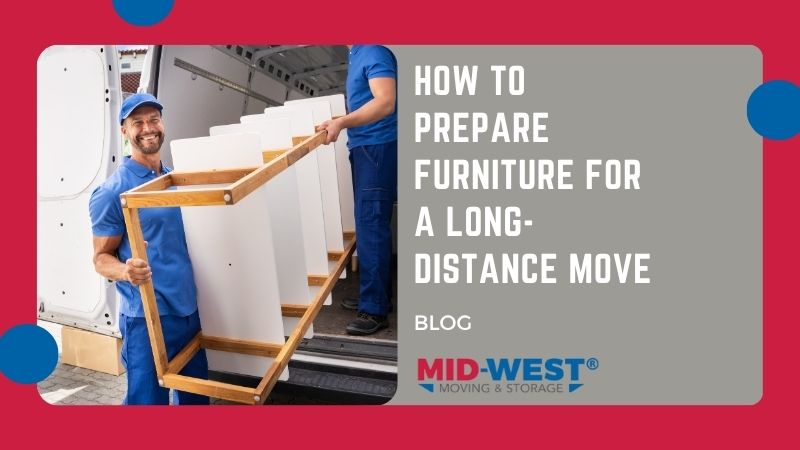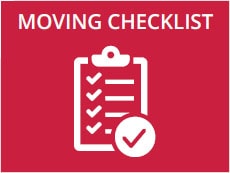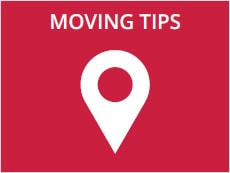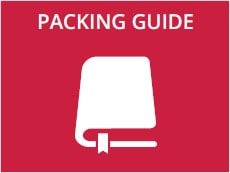Last Updated on June 23, 2025 by Kari-Ann Ryan
The Ultimate Guide to Protecting Your Furniture During Interstate or Cross-Country Relocation
Relocating to a new home is an exciting milestone—but moving furniture across hundreds or even thousands of miles requires more than just wrapping a couch in plastic. From heirloom dining tables to leather sectionals and fragile nightstands, your furniture deserves a thoughtful, strategic approach when it comes to long-distance moving.
In this complete guide, we walk you through how to prepare your furniture for a long-distance move safely, efficiently, and professionally. Whether you’re relocating for work, downsizing, or starting a new chapter in another state, this step-by-step resource will help you minimize risk, reduce stress, and preserve the condition of your most valuable home furnishings.
Why Proper Furniture Preparation Is Crucial for Long-Distance Moves
Long-distance moves typically involve extended transit times, multiple transfers between trucks or warehouses, and exposure to environmental factors like humidity, heat, or rain. Poor packing or unprotected items can lead to:
- Surface scratches or gouges in wood
- Torn upholstery or broken legs
- Warping from moisture or extreme temperatures
- Irreplaceable damage to antique or delicate pieces
According to industry statistics, nearly 20% of all moving damage claims involve furniture. The good news? Most of these issues are preventable with proper preparation.
Step-by-Step: How to Prepare Furniture for a Long-Distance Move
1. Take Inventory and Evaluate Each Item
Begin by creating a complete furniture inventory list. Note the item name, size, material, condition, and whether it’s worth transporting. This list helps with:
- Organizing what to pack, sell, donate, or dispose of
- Getting accurate moving quotes
- Tracking items during the move
- Filing insurance claims if needed
Take clear photos of each piece—especially high-value or fragile ones—for documentation.
Not sure which pieces to keep? Our guide on how to decide if furniture is worth moving can help you make informed choices.
Also, learn how to properly document your items by reading our post on how to take inventory of furniture before moving.
2. Clean and Sanitize Thoroughly Before Packing
Dust, grime, and moisture can lead to mildew, odors, or surface damage when sealed for long periods. Cleaning before packing protects furniture from deterioration during transit.
- Wood furniture: Use a microfiber cloth and wood-safe polish
- Leather upholstery: Clean gently and apply conditioner to prevent cracks
- Fabric furniture: Vacuum thoroughly and spot-treat any stains
- Metal parts: Wipe down to prevent rust or corrosion
3. Disassemble When Possible to Save Space and Reduce Risk
Bulky furniture is more prone to damage when moved as one piece. Disassembling furniture makes handling safer and more efficient.Examples of what to disassemble:
- Bed frames (detach headboards and footboards)
- Dining tables (remove legs or leaves)
- Sofas with removable arms or legs
- Modular shelving units and entertainment centers
Secure all hardware in clearly labeled zip-top bags and tape them directly to the furniture or place them in a dedicated hardware box.
4. Use High-Quality Packing Materials and Wrap Strategically
Proper protection is the heart of long-distance moving success. Invest in durable, professional-grade packing materials—not just old blankets or bed sheets. Recommended packing materials:
- Thick moving blankets for wrapping wooden or leather surfaces
- Bubble wrap for fragile parts and glass panels
- Plastic stretch wrap to secure drawers and padded coverings
- Mattress bags and sofa covers to protect against dirt and moisture
- Corner protectors for furniture edges
- Cardboard sheets to separate stacked items in the truck
5. Use the Right Moving Equipment and Tools
Professional moving tools reduce strain and prevent accidental drops or scratches during loading and unloading. Must-have moving equipment:
- Furniture dollies (two- and four-wheeled)
- Furniture sliders to protect floors while moving heavy pieces
- Lifting straps to safely carry bulky items
- Tie-down straps or ropes to secure items inside the moving truck
- Stair rollers if you’re moving from a multi-story home
Label furniture with moving instructions: “This Side Up,” “Fragile,” “Do Not Stack.”
6. Strategize Loading to Minimize Shifting and Damage
The layout inside the moving truck plays a huge role in keeping your items safe during a long haul. Best practices for truck loading:
- Load heavier items first to anchor the bottom layer
- Place delicate and lighter items on top
- Keep flat items (like mattresses or headboards) upright along walls
- Fill empty spaces with soft padding like blankets or cushions
- Use tie-down straps to prevent shifting on long drives
Avoid stacking furniture directly on top of one another unless fully protected and stabilized.
7. Label Every Piece Clearly and Systematically
Well-labeled furniture ensures efficient unloading and easier setup at your destination. What to label:
- Destination room (“Master Bedroom – Dresser”)
- Handling instructions (“Fragile – Glass Inside”)
- Disassembled parts (e.g., “Table Legs – Dining Room”)
- Item numbers to track inventory
Keep a digital copy of your master inventory with you during the move.
Bonus Tips for a Smooth and Successful Long-Distance Furniture Move
Moving furniture over long distances requires careful planning and skilled handling to ensure your belongings arrive safely and your move goes smoothly. Keep these important tips in mind:
- Hire a licensed and insured moving company with long-distance experience: When it comes to long-distance moves, hiring a licensed and insured moving company with the right experience makes all the difference. At Mid-West Moving and Storage, we specialize in interstate relocations and are fully licensed and insured to handle your furniture safely and efficiently.
- Measure all entryways and pathways at both your current and new home. Before moving day, take accurate measurements of doorways, hallways, staircases, and elevators. This helps you avoid unexpected problems like furniture that won’t fit and gives you time to plan for disassembly or alternate routes.
- Schedule your move early, especially during busy seasons. Book your moving date well in advance, particularly if you’re moving during peak months, typically from May through September. Early scheduling helps secure your preferred date and can prevent higher costs or limited availability.
- Consider purchasing additional insurance for valuable or sentimental items. Standard moving insurance may not cover the full value of high-priced or irreplaceable items like antiques, pianos, or artwork. Supplemental insurance can provide extra protection for your most treasured possessions.
- Prepare a “first night” box with essential items. Pack a separate box containing necessities such as toiletries, basic kitchen supplies, bedding, and essential tools. Having these essentials on hand will make your first night in your new home more comfortable without the need to unpack everything immediately.
Common Mistakes to Avoid When Moving Furniture Long Distance
Being aware of common errors can save you from damage, delays, and unnecessary expenses. Avoid these pitfalls:

- Skipping Thorough Cleaning and Proper Wrapping:
Dirt and moisture trapped under inadequate wrapping can cause stains and deterioration. Always clean furniture thoroughly and use professional packing materials for protection. - Using Poor-Quality Packing Supplies:
Low-grade tape and blankets don’t provide adequate cushioning or security. Invest in high-quality moving blankets, bubble wrap, and stretch wrap to safeguard your furniture. - Leaving Drawers Loaded or Unsecured:
Moving furniture with full drawers increases weight and the risk of drawers opening during transit, potentially damaging both the furniture and surrounding items. - Overloading the Truck Without Securing Items Properly:
Improperly secured furniture can shift, leading to scratches, dents, or broken parts. Use tie-down straps to anchor items and prevent movement during transport. - Failing to Document Your Furniture Condition Before the Move:
Without detailed photos and an inventory list, it’s difficult to support damage claims. Document your furniture’s condition before packing to protect your investment.
Preparation Is Key to a Successful Long-Distance Move
Furniture represents both your investment and personal style, making proper preparation vital for a successful long-distance move. Taking the time to clean, disassemble, protect, and clearly label each piece significantly reduces the risk of damage and streamlines the moving process.
Whether you’re relocating for a new job, upgrading your living space, or starting fresh in a new city, these proven strategies will help ensure your furniture arrives safely and ready to make your new house feel like home.

Director of Marketing & Development
Kari-Ann Ryan is a dynamic marketing strategist with a proven track record in brand development, corporate visibility, and business growth. As the Director of Marketing & Development for Mid-West Moving & Storage and Chicago Office Movers, she leads all branding, marketing, and business development initiatives, driving awareness and engagement across multiple industries.
With extensive experience in multi-brand marketing, nonprofit fundraising, event planning, and retail management, Kari-Ann brings a comprehensive and results-driven approach to her role. She is a dedicated leader in the business community, actively involved in the Schaumburg Business Association and the GOA Regional Business Association. She also serves as a Board Member for the Alzheimer’s Association Illinois Chapter, reinforcing her commitment to advocacy and philanthropy.
In addition to her corporate role, Kari-Ann is the founder of LMJ’s Lost Souls – Alzheimer’s Fund, a nonprofit organization dedicated to awareness, education, and fundraising for Alzheimer’s research and support.
She holds a Bachelor of Business Administration in Marketing from Western Michigan University and is Certified in Constant Contact Email Marketing, with expertise in social media strategy and digital engagement.












